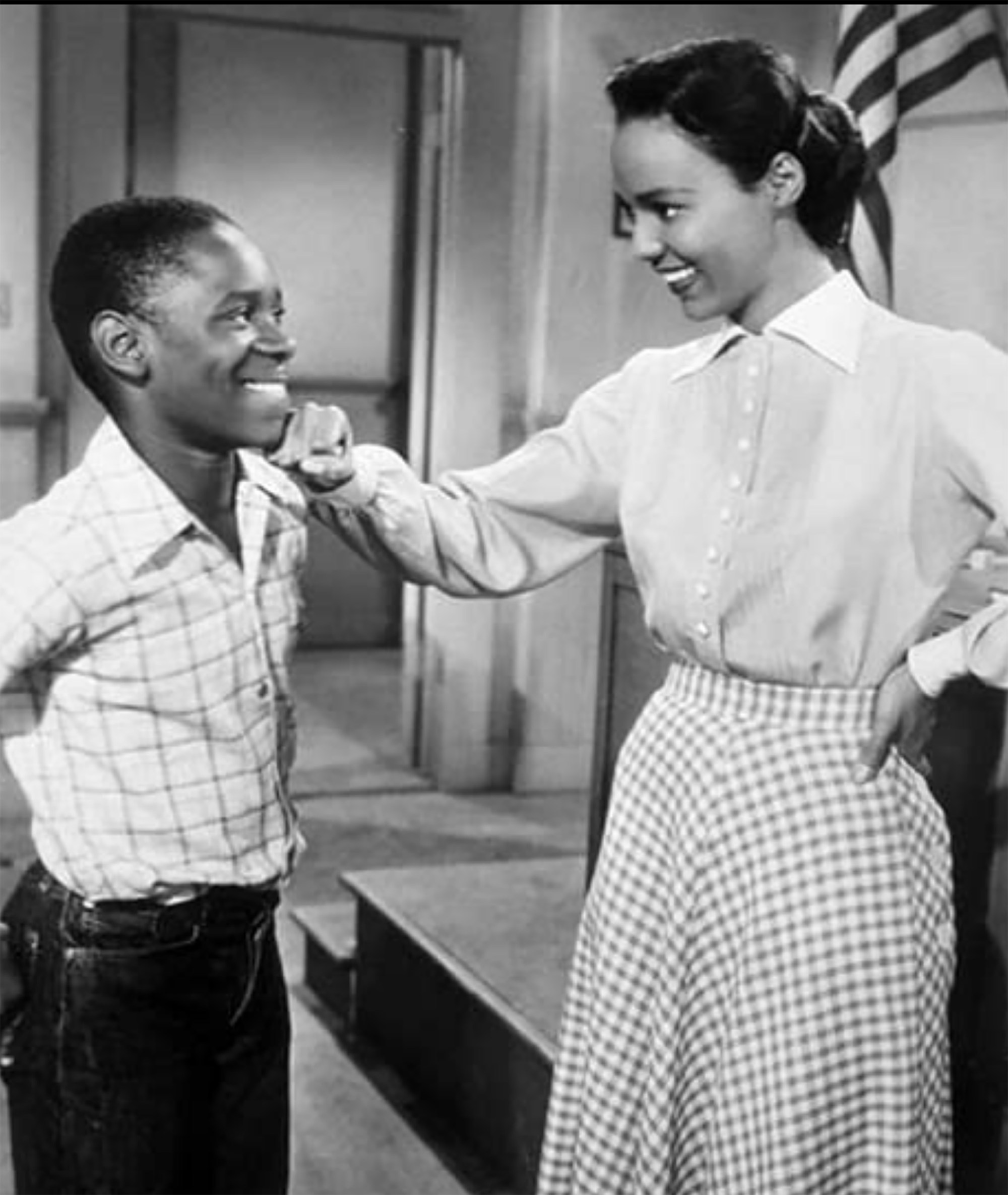
- Film
“Bright Road” (1953): a Tale of One Committed Black Teacher, played by Dorothy Dandridge, Golden Globe Nominee
Directed by Gerald Mayer (nephew of Louis Mayer, powerful head of MGM), Bright Road was a simple, modest, but winningly compelling tale of the impact that one dedicated Black teacher bore on her pupils.
The film was adapted from the Christopher Award-winning short story, “See How They Run,” by Mary Elizabeth Vroman, which was published in the June 1951 issue of the Ladies’ Home Journal.
Featuring a nearly all-Black cast, the film stars Dorothy Dandridge as an idealistic elementary school teacher, who is trying to reach all of her students while focusing extraordinary efforts on one “problem” boy.
The movie marks the screen-acting debut of Harry Belafonte, who plays the school’s kind and liberal principal.
Rather unusually, Dandridge the actress begins the story by introducing herself and the other figures of the tale; from time to time, she also narrates the proceedings.
Dandridge plays Jane Richards, a young, uncompromisingly committed teacher who begins her career at a rural African American elementary school in Alabama.
One of the students in her fourth-grade class is C.T. Young (Philip Hepburn), who, although naturally bright, is not particularly motivated or interested in his studies. It has taken him two years to advance through each grade level.
Sensing his potential, Richards becomes determined to get through to C.T. and have him take only one year to complete her class, even though the school’s other teachers have already given up on him as a “backward” child.
The school’s principal (Harry Belafonte) also has doubts about C.T., but he admires Richards’ enthusiasm and commitment and endorses her attempts to reach the boy.
Gradually, despite great odds, Richards’ efforts with C.T. begin to pay dividends and his grades start to improve.
However, all of her progress with him seems to be undone when C.T.’s classmate and closest friend Tanya (Barbara Ann Sanders) suddenly dies from viral pneumonia. Devastated by the loss, C.T. runs away from school.
Upon his return, he starts a schoolyard fight. When asked to apologize for his actions, he refuses, isolating himself even more from his teacher and classmates. Frustrated and saddened, Richards is reluctantly forced to decide to give C.T. the failing marks that he was accustomed to having before.
The turning point occurs when Richards overhears C.T. helping another student with arithmetic: Richards understands that, despite C.T.’s refusal to participate in class, he has actually continued to learn. Seeing this demonstration of knowledge, she is heartened and quietly changes his failing grade into an ‘A.’
C.T.’s involvement in the class increases when he calmly handles a schoolroom crisis. A swarm of bees invades the room: the other students and Richard panic and swat at the bees, but C.T. calmly collects the queen and carries it outside.
The school year ends with Richards’ class observing a caterpillar emerge from its cocoon transformed into a butterfly – as Richards notes, “just as you and I will be born again someday, and everyone we’ve ever known or loved.” She adds that witnessing the butterfly’s first flight represents “a wonderful promise of things to come.”
In the end, Richards is rewarded for her hard work, when C.T., leaving for his summer vacation, stops by to tell her how much he loves and respects her.
The only white character in the film is the doctor who has been called in to diagnose Tanya.
Though it was made on a very low budget (less than $400,000), Bright Road was still a commercial failure, largely due to its limited distribution and lack of adequate publicity and marketing.
However, Mary Elizabeth Vroman’s work on the film earned her admittance to the Screen Writers Guild (SWG), making her their first African American woman member. A schoolteacher in Alabama, she had based her story on her experiences in the classroom. As an author, her stories and screenplays depicted the challenges incurred by poverty and social disadvantage.
Both Dandridge and Belafonte would go on to have illustrious careers. Dandridge would win major recognition for playing the lead in Otto Preminger‘s 1954 musical drama, Carmen Jones, thus becoming the first woman to score a Best Actress Oscar nomination. In 1959, she received a Golden Globe nomination for Best Actress in Motion Picture for her performance in the musical Porgy and Bess. Sadly, her career would be cut short due to her untimely death by suicide in 1965, at the age of just 42.
In contrast, Belafonte would become a major leading man, using his considerable singing and dramatic skills in a number of popular Hollywood movies, including Island in the Sun (1957), in which Dandridge also starred. Alongside Sidney Poitier, who passed away last month, Belafonte, the younger by three years, would become one of Hollywood’s most prominent African American actors as well as a respected political activist.